Showing children butterfly scales
By Maurice Moss
I cannot resist picking up the wings of dead butterflies and moths however damaged they may seem to be. They make useful material for showing children the origin of the colours and patterns of the wings with the help of a low-power microscope such as the Pocket Microscope sold by the Natural History Museum.
I place a wing on a microscope slide and ask a child to place a finger tip on an interesting area and press down firmly without wiggling their finger from side to side. On lifting their finger they will see a dusty pattern on their finger tip which can then be pressed onto another clean slide. On removing the wing from the first slide a pattern of scales will be seen arising from the other side of the wing. These two slides then have patches of scales from each side of the wing. The damaged wing itself is worth studying to discover the pattern of the scales and the small pockets on the surface into which the pegs of the scales fit.
I found a dead and rather damaged painted lady butterfly during 2011 and will use it to demonstrate the preparation of slides for studying the scales. The damaged wings were separated from the body (Fig. 1) and the lower wing turned over (Fig. 2) and placed onto a clean slide.
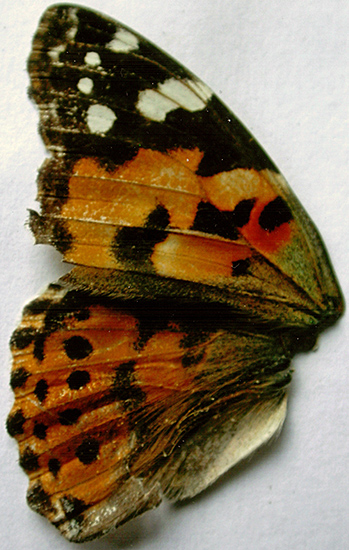 Figure 1: Upper surface of wings
Figure 1: Upper surface of wings
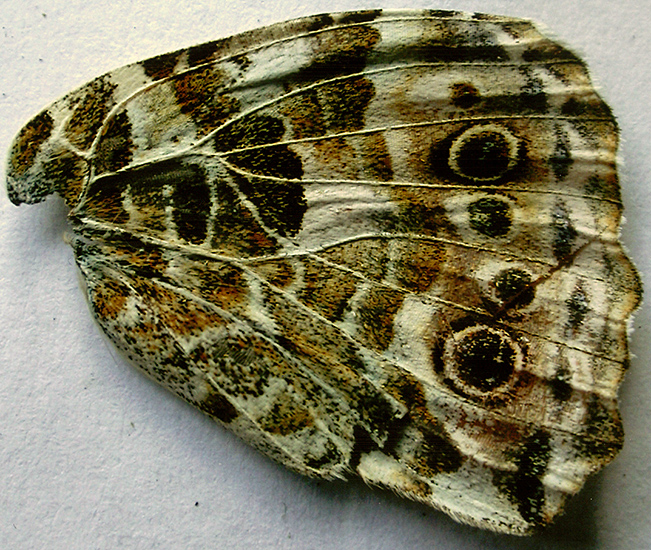 Figure 2 (right): Lower surface of wing
Figure 2 (right): Lower surface of wing
The largest eyespot (Fig. 3) was chosen for picking up scales on my finger tip which were then transferred to a second clean slide. The scales from the upper surface (Fig. 4) remain on the first slide.
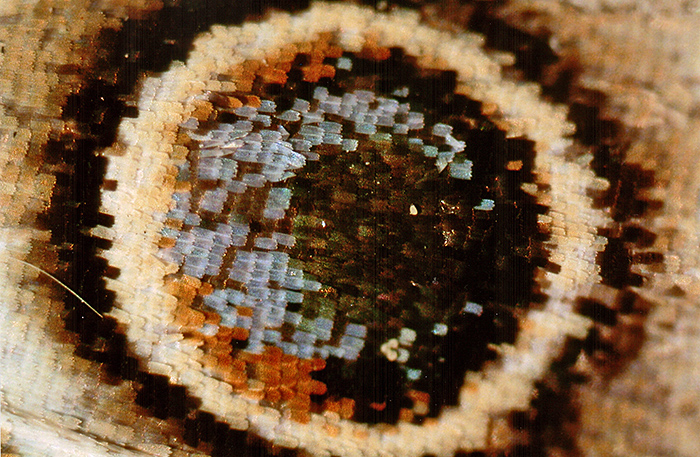 Figure 3: Eyespot
Figure 3: Eyespot
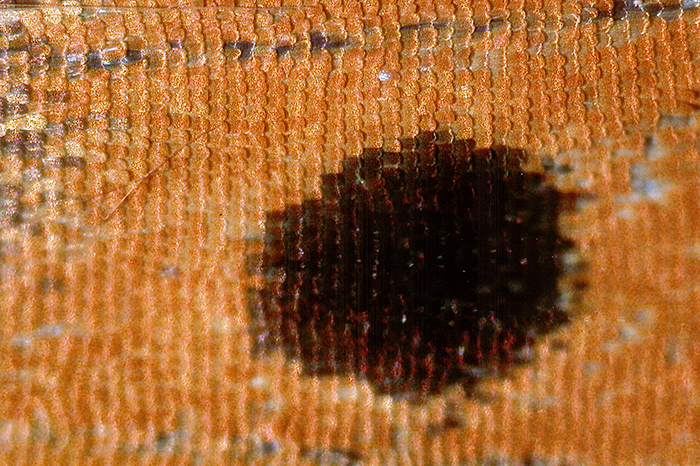 Figure 4: Scales from upper surface
Figure 4: Scales from upper surface
The scales from the two surfaces can then be studied with the microscope using both dark field and bright field illumination. Those from the eyespot on the under surface have quite complex shapes (Figs. 5–7).
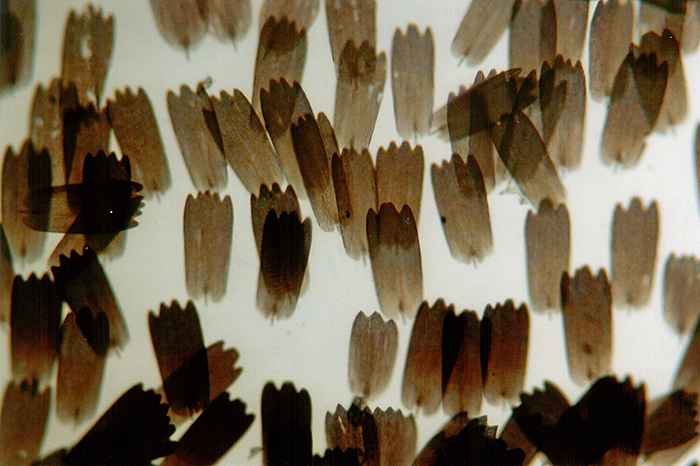 Figure 5: Eyespot scales (bright field)
Figure 5: Eyespot scales (bright field)
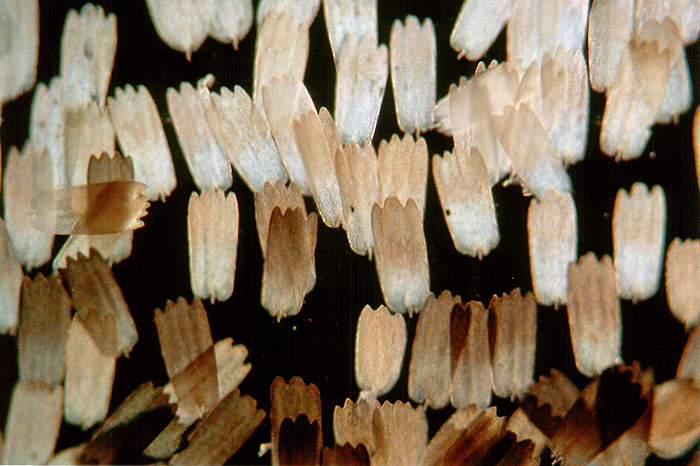 Figure 6: Eyespot scales (dark ground)
Figure 6: Eyespot scales (dark ground)
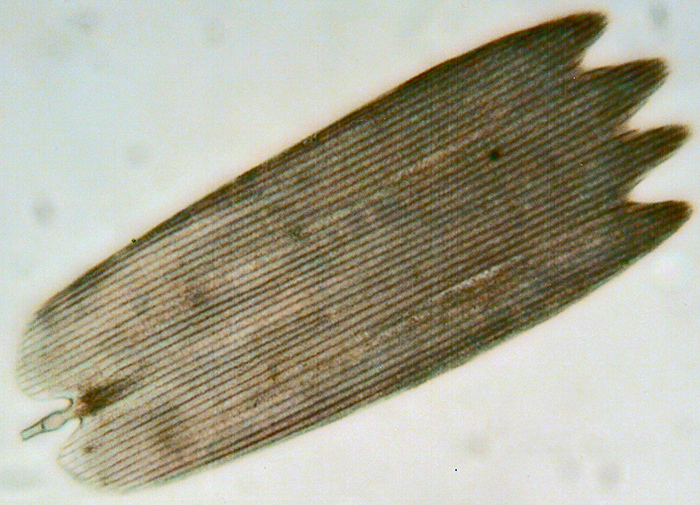 Figure 7: Single scale from eyespot
Figure 7: Single scale from eyespot
The scales from the top surface are relatively simple (Figs. 8–12).
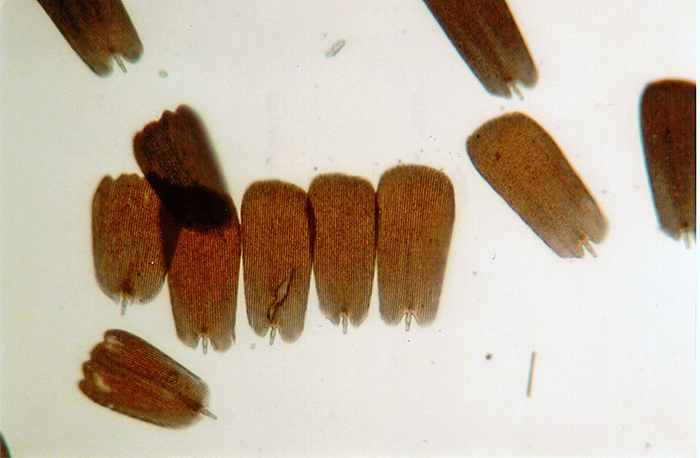 Figure 8: Upper surface scales (bright field)
Figure 8: Upper surface scales (bright field)
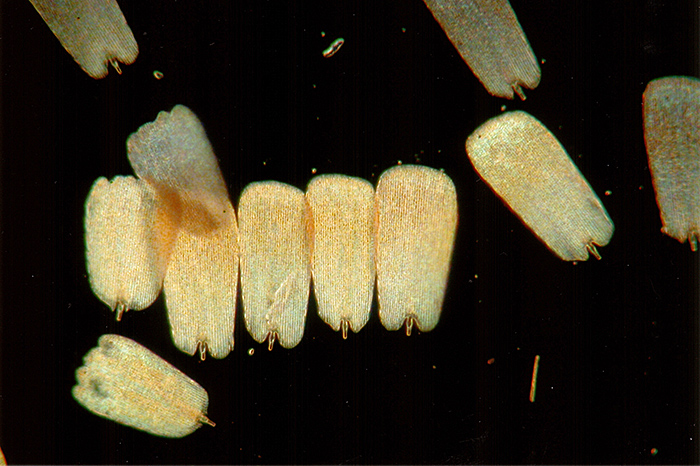 Figure 9: Upper surface scales (dark ground)
Figure 9: Upper surface scales (dark ground)
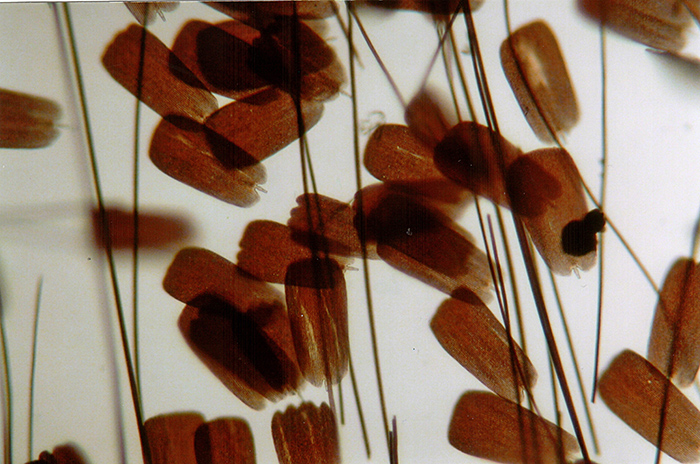 Figure 10: Upper surface scales (bright field)
Figure 10: Upper surface scales (bright field)
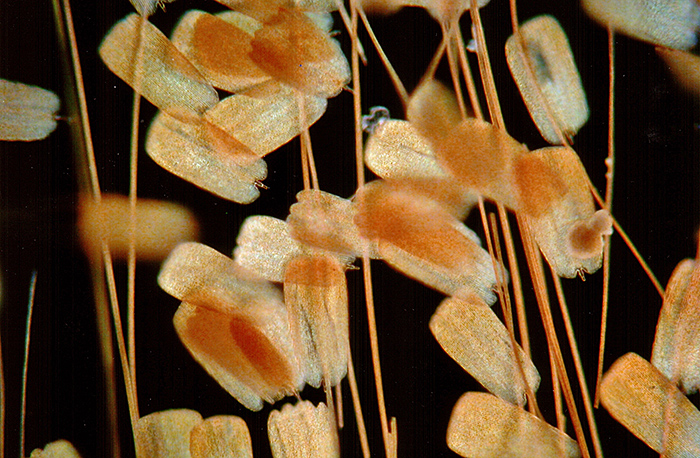 Figure 11: Upper surface scales (dark ground)
Figure 11: Upper surface scales (dark ground)
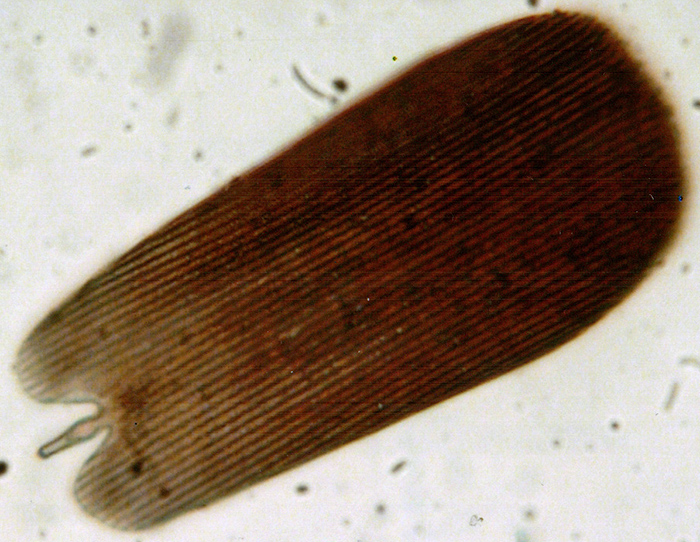 Figure 12: Single scale from upper surface
Figure 12: Single scale from upper surface
The slides are worth retaining for further study by sealing a cover slip over the scales.

